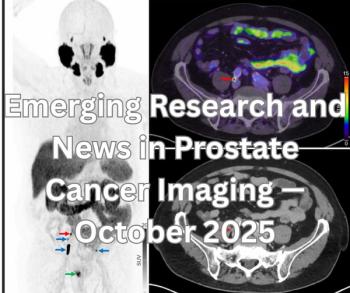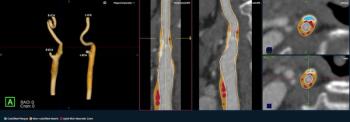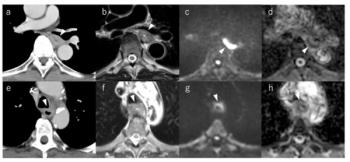
RSNA 2016: Looking Out to the Next Frontiers in Molecular Imaging
The future of molecular imaging.
Molecular imaging, since its inception, has set out to revolutionize diagnostic imaging. However, a myriad of challenges continue to stand in the way of this revolution. Chief among them has been poor image quality, limited quantitation accuracy, and occasional shortages of key radiopharmaceuticals.
With the rise of hybrid imaging systems such as PET/CT, SPECT/CT, and PET/MR, there has been a quantum leap in image quality and quantitation capabilities. Despite these advances, molecular imaging continues to face a broad set of challenges, including increased competition from premium CT and MR techniques, as well as changes in reimbursement.
Over the last few years, market participants have executed strategies that range from reactionary to revolutionary in order to address these challenges.
PET/CT: The Undisputed Molecular Imaging Champion
The PET/CT market has seen stronger-than-expected growth over the last few years. New PET/CT technologies that offer high quality imaging with robust quantitation accuracy have contributed to this trend. Vendors now offer a broader portfolio range of systems that they can customize to varying end- user requirements.
Philips Healthcare’s Vereos PET/CT with digital photon counting technology has heralded a new era of digital PET which aims to offer the highest image quality with the lowest possible scan time, coupled with robust reconstruction algorithms and quantitation accuracy. Philips Healthcare had faced some manufacturing issues at the company’s Cleveland facility, but with these now resolved, the company is positioned to compete aggressively.
GE Healthcare has chosen to place an emphasis on modularity with the launch of the Discovery IQ, with the ability to upgrade from three to five PET rings based on end-user requirements. In October 2016, GE Healthcare received FDA approval to market the Discovery MI, which uses a lutetium-based scintillator crystal array with a silicon photomultiplier (SiPM) bloc. The Discovery MI can be leveraged for cardiology, oncology, and neurology, and specializes in small lesion detection, a key requirement in early diagnosis and staging of diseases. Siemens Healthineers’ launch of the Biograph Horizon PET/CT post-FDA approval in early 2016 places emphasis on cost savings and is suited for smaller care providers with limited space. Both the fixed and mobile versions of the Horizon have small footprints and are cost effective to operate and maintain.
Among the smaller market participants, NeuSoft launched the NeuSight PET/CT in early 2016 post-FDA approval. The NeuSight lacks time of flight and is currently being marketed to small- and medium-sized imaging centers. Toshiba Medical systems continues to market the Celestion PET/CT as a solution to address the challenges faced by providers in radiation oncology and in the two years since its launch, has managed to capture around a 10% share of the U.S. market. Recently launched PET radiopharmaceuticals, which enable early diagnosis and staging of specific cancers and neurological disorders, have also contributed to market growth in the adoption and utilization of PET/CT equipment.[[{"type":"media","view_mode":"media_crop","fid":"56159","attributes":{"alt":"Tanvir Jaikishen, Senior Research Analyst, Transformational Health, Frost & Sullivan","class":"media-image media-image-right","id":"media_crop_682091096753","media_crop_h":"0","media_crop_image_style":"-1","media_crop_instance":"7057","media_crop_rotate":"0","media_crop_scale_h":"0","media_crop_scale_w":"0","media_crop_w":"0","media_crop_x":"0","media_crop_y":"0","style":"height: 251px; width: 200px; border-width: 0px; border-style: solid; margin: 1px; float: right;","title":"Tanvir Jaikishen, Senior Research Analyst, Transformational Health, Frost & Sullivan","typeof":"foaf:Image"}}]]
SPECT/CT: Poised for a Strong Comeback
SPECT has faced a broad range of well documented challenges over the last few years. Chief among them has been a Tc-99m
Unlike Philips Healthcare, GE Healthcare and Siemens Healthineers continue to invest significant resources in SPECT/CT. GE Healthcare’s launch of SPECT/CT products in 2014, 2015, and 2016 reflects the company’s belief that recent advancements in SPECT quantitation coupled with analytics that enable reductions in dosages and scan times will play a key role in driving SPECT growth over the next few years. GE’s most recent launch, the NM CT 670 CZT with Cadmium Zinc Telluride (CZT) camera represents a major technological innovation over the standard sodium iodide (NaI) camera in over five decades. The CZT allows for simultaneous physiological and anatomical imaging of the body, making it a whole body SPECT/CT product. The CZT also allows simultaneous use of more than one radiopharmaceutical, thereby reducing the need for multiple procedures. Molecular Dynamics, an Israeli based firm is also currently developing a CZT SPECT/CT platform, the Valiance X12. The X12 consists of 12 CZT detectors which allow for automatic adoption to any body type with special emphasis on focusing on specific regions of interest in the body from multiple angles.
SPECT quantitation software has improved significantly over the last few years. GE Healthcare’s Xeleris 4.0 provides software packages for the evaluation of lungs, brain, heart, and blood flow, while reducing imaging times and dosage. Siemens Heathineers’ latest version of syngo.via enables better visualization and quantification of physiological characteristics of organs such as lungs, kidneys, and the stomach which aids in more accurate disease staging. Companies such as UltraSPECT also offer proprietary reconstruction algorithms and wide beam reconstruction to help lower radiopharmaceutical doses, shorten acquisition times, and improve image quality. These advancements are broadly expected to facilitate increased adoption of SPECT/CT as well as increase the number of SPECT/CT procedures over the coming years.
PET/MR: The Signa PET/MR Technological Edge
Adoption of PET/MR continues to be impacted by the high cost of the modality as well as limited clinical applicability. Philips Healthcare no longer commercially markets the Ingenuity PET/MR as a result of reduced demand, resulting in only two available PET/MR systems, the Biograph mMR by Siemens Healthineers, and the Signa PET/MR by GE Healthcare. While the Biograph currently has a larger installed base, not only in the United States but also globally, Signa’s use of silicon photomultiplier tubes and time-of-flight for improved sensitivity and image quality gives the modality a clear edge over the Biograph. This has led to a faster adoption of the Signa since the 2015 launch in the United States. GE Healthcare also seeks to offer users the opportunity to upgrade from the Signa to the Signa Premier MRI, once the latter receives FDA approval.
Conclusion
Molecular imaging is set to benefit from the shift to value-based care by aiding in early diagnosis, disease staging, and the assessment of existing and investigational treatments by clinicians and researchers, respectively. This in turn will provide providers with better management of treatment protocols, as well as enable faster access to market for new pharmaceuticals and products. With reimbursements being increasingly tied to quality, the medical imaging industry is hard-pressed to demonstrate meaningful contribution toward improved health outcomes. In this context, molecular imaging is set to play its most important role yet.
Newsletter
Stay at the forefront of radiology with the Diagnostic Imaging newsletter, delivering the latest news, clinical insights, and imaging advancements for today’s radiologists.
































